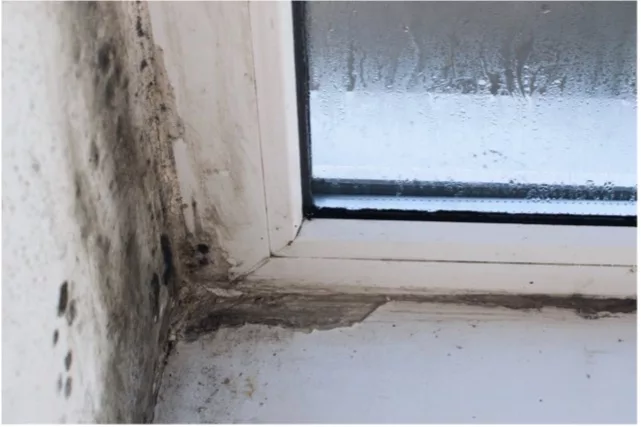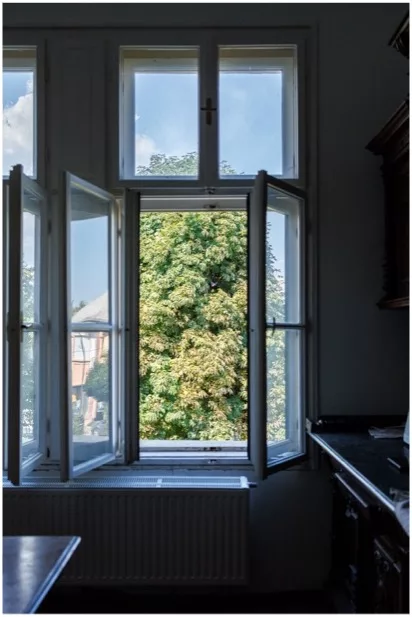Mould growth continues to be a widespread concern in UK social housing, and can lead to tenant complaints and disputes with landlords. While it may first appear as a cosmetic issue, mould often signals deeper problems and poses serious health risks. This blog outlines the primary causes of mould in social housing, clarifies remediation responsibilities, and provides practical measures for both housing providers and tenants to prevent mould recurrence.

Root Causes of Mould in Social Housing
One of the primary causes of mould in homes is elevated moisture levels, which often stem from poor ventilation, persistent condensation, or damp conditions. Everyday household activities, such as cooking, showering, and drying clothes indoors without adequate ventilation, can significantly increase indoor humidity levels, especially in older or smaller properties with limited airflow.
In some cases, mould can point to structural issues like rising damp, water penetration from damaged roofs or seals, or a lack of sufficient insulation. Identifying these causes is critical to formulating an effective remediation strategy.
Health Risks Associated with Mould Exposure
Black mould, in particular, can have severe health impacts. NHS guidelines note that inhaling mould spores may worsen asthma, trigger allergic responses, and affect those with existing respiratory or immune conditions. Vulnerable persons such as young children, the elderly, and those with pre-existing health conditions are especially susceptible. Prompt action to address mould is therefore essential to protect tenant health and wellbeing.

Best Practice for Preventing Mould: Guidance for Tenants
- Utilise extractor fans during cooking and bathing.
- Open windows regularly to promote ventilation, regardless of the season.
- Avoid placing furniture directly against external walls to facilitate airflow.
- Wipe down condensation on windows and sills as part of routine maintenance.
- Opt to dry clothes outdoors or in well-ventilated areas.
- Report any signs of dampness or leaks to the housing provider immediately.
Best Practice for Preventing Mould: Guidance for Housing Providers
- Ensure properties are adequately insulated.
- Fit and routinely service ventilation units, especially in areas prone to moisture build-up like kitchens and bathrooms.
- Apply mould-resistant coatings in locations prone to condensation.
- Conduct regular inspections to detect leaks, seal failures, or damp patches early.
- For properties with persistent mould problems, seek professional guidance.
- Provide residents with comprehensive moisture control and mould prevention information upon tenancy commencement.
- Ensure mould-related repairs and health hazards are resolved within the timeframes mandated by Awaab’s Law.
Proactive management reduces the risk of costly repairs and mitigates tenant complaints, supporting compliance with housing standards and safeguarding residents’ health.
Addressing Persistent Mould Issues
When mould continues to return after cleaning, it usually suggests deeper issues such as hidden leaks or inadequate ventilation, which require expert attention. Surface treatments alone—such as painting over mould or cleaning—do not address the underlying causes. Persistent mould is often a symptom of hidden leaks, inadequate insulation, or insufficient ventilation, all of which must be rectified to achieve lasting remediation.
First Time Fix
At Mouldex, we specialise in mould, condensation, and radon management solutions. We provide expert support to social housing providers committed to maintaining safe, healthy living environments.
Our First Time Fix service is designed specifically for social housing. In just one visit, we treat the mould, tackle the underlying causes, and provide residents with guidance to help prevent it from returning. Fully compliant with Awaab’s Law and Part F regulations, this approach saves time, reduces disruption, and supports healthier, safer homes for residents.
For further support or to arrange a professional survey assessing condensation and mould risks, contact us at 01278 428347 or email info@mouldexltd.com.
More from Mouldex -
Mould in Social Housing: Health Risks, Causes & How to Remove It Safely
Mould in social housing signals more than superficial issues. It often reveals hidden moisture problems that can affect health and property. In the UK's damp climate, many residents face ongoing mould problems, often caused by condensation, poor ventilation, or...
Preventing Condensation and Mould in Social Housing: Causes, Risks, and Solutions
This guide gives an overview of why condensation occurs in social housing, how it leads to mould, what Awaab’s Law requires from landlords, and covers solutions to prevent future mould & condensation issues. Condensation is a common part of daily life in homes,...
Radon in the UK: How to Identify, Assess, and Reduce Risk in Your Home
Radon is a naturally occurring radioactive gas found throughout the UK. While typically harmless in outdoor environments, it can pose serious health risks when it accumulates indoors—especially in areas with certain types of geology. For homeowners and property...
Discover our range of mould-fighting products – Mouldfix
Find out more about mould – Mould Information
